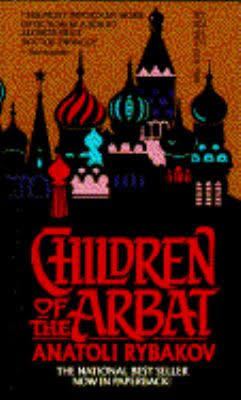8.4 /10 1 Votes8.4
Original title Дети Арбата Series Children of the Arbat Publication date 1987 Adaptations Children of the Arbat Published in english 1988 | 4.2/5 Goodreads Originally published 1987 Page count 685 | |||||||||||||||||||||||||||||||||
 | ||||||||||||||||||||||||||||||||||
Publisher Little, Brown & Company Similar Dust and Ashes, Generations of Winter, Life and Fate, The Gulag Archipelago, The Kolyma Tales | ||||||||||||||||||||||||||||||||||
children of the arbat 1 of 2 1 2
Children of the Arbat (Russian: Дети Арбата) is a novel by Anatoly Rybakov that recounts the era in the Soviet Union of the build-up to the Congress of the Victors, the early years of the second Five Year Plan and the (supposed) circumstances of the murder of Sergey Kirov prior to the beginning of the Great Purge. It is the first book of the tetralogy, followed by the books 1935 and Other Years (Russian: Тридцать пятый и другие годы, 1989), Fear (Russian: Страх) and Dust and Ashes (Russian: Прах и пепел).
Contents
Principally told through the story of the fictional Sasha Pankratov, a sincere and loyal Komsomol member who is exiled as a result of party intrigues, the novel is semi-autobiographical - Rybakov too was exiled in the early 1930s. The book recounts the growing hysteria of the period where simple mistakes or humour were seen as examples of sabotage or acts of wreckers (cf The Joke by Milan Kundera). In effect the book exposes how, despite the honest intentions of Pankratov and older Bolsheviks like Kirov, Stalinism is destroying all their hopes.
The novel is also notable for its portrayal of Joseph Stalin as a scheming and paranoid figure.
The book, which was written between 1966 and 1983, was suppressed until the Perestroika era (published for the first time as a feuilleton in 1987). It was a great publishing sensation of that era, being so direct in its criticism of the Soviet system, seemingly honest in its portrayal of Stalin and harsh in its cynical view of those who turned the Soviet Union into a "Great Power".
The book was first published in English in 1988 by Dell Publishing, a division of Bantam Doubleday Dell.
